The Intervention Of Healthy Diet And Nutrition In Managing
Introduction:
Type 2 diabetes is the chronic health condition that cannot be cured permanently but symptoms and impacts of this health condition can be manged effectively by conducting the effective dietary and nutritional intervention (Critchley et al. 2018). In modern context of the adult nursing, the implementation of the effective nutritional and dietary intervention is crucial for maintaining the normal range of glucose in the blood stream of patients who suffer from Type 2 diabetes. The pathophysiological study of Type 2 diabetes shows that, in this chronic health condition, two possible reasons are associated with development of this health condition in people (Dong et al. 2021). One of the reasons is the insufficient production and secretion of insulin hormones from the beta cells of pancreas. Insulin hormone plays crucial roles in bringing the blood glucose level back to the normal range thereby maintaining the glucose homeostasis inside the body. Another potential reason that is associated with occurrence of Type 2 diabetes is the insulin resistance that develops inside the thereby reducing the capability of body for sufficient insulin utilisation [PHE, 2018]. The inability of body to use sufficient insulin makes it difficult for metabolising the excess glucose in the blood stream. For those conducting research on such topics, seeking healthcare dissertation help can provide valuable support in developing high-quality work.
In adult nursing, nursing professionals can manage the adverse impacts of the Type 2 diabetes on patient by making positive as well as effective changes in the food habit, dietary intake, choice for foods and pattern of food intake in case of patients with Type 2 diabetes (Kamradt et al. 2017). NMC (2018) mentioned that, adult nurses must work in multidisciplinary team in which they can be guided by the nutritionist and diabetologist regarding the foods that need to be avoided by the diabetic patients and the foods that are essential for providing energy and essential nutrients to the patient’s body [NMC, 2018].

This research study will present a critical discussion on the selected research paper to explain the importance of the dietary and nutritional intervention for managing the Type 2 diabetes in adult nursing. In this context, this research study will present search strategy, inclusion and exclusion criteria, literature review and the critical appraisal of selected papers.
Research questions;
This systematic review has used PICO tool for setting the realistic as well as appropriate aim that is expected to be best suited for formulation of relevant research questions. PICO tool is widely used by researchers in their systematic review for using the criteria of mentioned in the PICO tool to select the relevant research studied and make critical analysis to answer the research questions (Milner and Cosme, 2017). PICO tool consists of four major criteria such as population or patient type (P), intervention (I), comparison or control (C) and outcomes (O). this systemic review has used these four criteria of the PICO tool to select the best suited and relevant articles on the selected research topic. this research study has used the PICO tool in the following way:
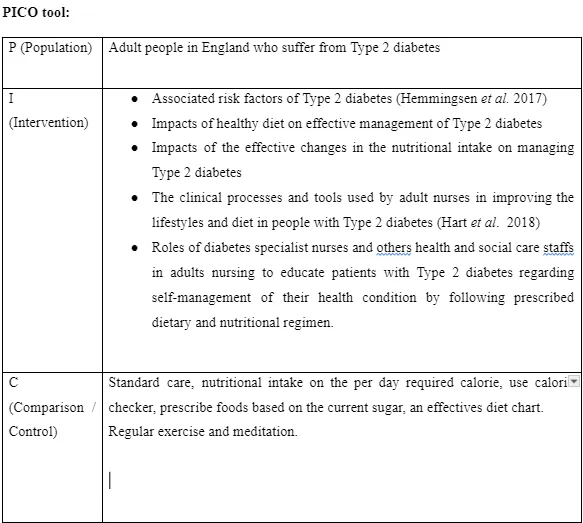

Research aim:
This research aims to explore the importance of an effective nutritional and dietary intervention for effective management of Type 2 diabetes in adult nursing. This research study also aims to determine how Type 2 diabetes poses adverse impacts on the health wellbeing and living standard of people. in addition to this, the research study will also discuss the roles of adult nurses in providing guidance to patients with Type 2 diabetes in making effective modification in their feeding habits, choices for foods, pattern of meal intake and nutritional intake per day. Here the research study will determine the challenges that are faced by the adult nurses in maintaining effective implementation of effective dietary and nutritional intervention in case of Type 2 diabetes patients.
Research rationale:
In the UK, children and adult are highly vulnerable to the risk of Type 2 diabetes. evidence suggest that in the UK, more than 24% of the emergency admission on adults in NHS hospitals is due to Type 2 diabetes (PHE, 2018). clinical intervention suggests that major possible cause of higher prevalence of Type 2 diabetes in adult people in the UK is their sedentary lifestyle and unhealthy eating habits which lead them to gain excessive weight. as mentioned by Hemmingsen et al. (2017), adult people residing in the England who suffers from overweight and obesity are 34% more prevalent to Type 2 diabetes than other people who have normal weight. Adult nurses working in the NHS hospitals in England face severe difficulties in managing deteriorating physical health of adult people. in this context, this systematic review is highly realistic as well as relevant to provide clear knowledge and information to learner regarding what is type 2 diabetes, , how it develops in people, its associated risk factors and how the dietary intervention can manage symptoms of type 2 diabetes. Moreover, this systematic review will also assist adult nurses to obtain clear understanding regarding the impacts of dietary and nutritional intervention in managing type 2 diabetes which will help them to use the evidence-based approach to meet the holistic needs of the patients.
Research methodology:
Research methodology is the process that outlines the systematic pathways through which the researcher will progress to meet it aims and objective (Latifnejad Roudsari, 2019). Researcher must select a relevant and best suited research methodology ta will enable researcher to follow all the necessary processes and tools that are required to accomplish research.
In this systematic review, the researcher has used different online database for collecting the bast suited primary research papers on the selected research topic. here researcher has used CINAHL, British National Index (BNI), PubMed and Cochrane Library (Central Register of Controlled Trials) for collecting best suited and highly relevant primary research papers. Another well-known online database Psych info has already been used by the researcher to collect specific and relevant primary research papers but after the search it is seen that majority of the collected articles are repeated. Additionally, some of the primary research articles that are collected by using Psych info have the vague and irrelevant discussion that cannot be used to discussing this research topic. therefore, the search result by using Psych info has been removed. Researcher has selected total 8 primary research papers that are highly relevant and appropriate in terms of meeting the objectives and aim of this research study. here researcher has used several key terms for collecting the highly relevant primary research articles from the online database. These key terms are as follows:


In this systematic review, the researcher has used the inclusion and exclusion criteria for narrowing the literature search which assisted the researcher to collect the high specific and best suited primary articles. Using the inclusion criteria assisted the researcher in this systematic review to carry out the randomised control trial (RCT). As mentioned by Latifnejad Roudsari (2019), the inclusion criteria are the sets of criteria that are used by the researcher to collect such research papers that meet all these criteria thereby assisting the research study to be accomplish successfully. In this systematic review, researcher has set the times scale for the last 5 years in this context the research papers that are publish within the last 5-year are selected for this review. On the others hand, UK is selected by that researcher as the target country-based on which the research papers are collected. While collecting these articles from the online database, the researcher has checked the validity and the authority of each primary research paper. research papers that are selected are highly valid and trustworthy that will provide highly appropriate information about the research topic. English is set as the language for selecting the literature.
Exclusion criteria are used in this systematic review to narrow the literature search. the research papers that do not contain the relevant and authentic information are excluded from the selection list. On the other hand, research paper that are not written in English, not accessed over the internet and contain the vague data are also excluded from the list. The research papers that instead of containing the relevant data on the research topic are published before 5 years are excluded from the list because of the applicability and time-related appropriateness of these research papers.
here researcher has performed the RCT to check as well as evaluate the usefulness and applicability of the primary articles ta are selected from online database. Then the pilot study has been conducted to compare the impacts of the dietary and nutritional intervention on management of Type 2 diabetes in adult nursing with the factors that are associated with occurrence and prevention of this illness. as mentioned by Hemmingsen et al. (2017), pilot study is used in the research study to check that whether the researcher has all the resources that are needed to accomplish the research study successfully. Through conducting the pilot study researcher check the expected outcomes and possible implications of the entre study on the public health and welfare. In this research study researcher has included other related topics such as risk factors of type 2 diabetes, causatives factors of type 2 diabetes, challenged faced by adult nurses in tackling type 2 diabetes in patient and the effective health assessment and management process in preventing the adverse impact on this chronic health condition.
Results of Search strategy:
The literature search by using the online database has identified total 240 research articles on the impacts of the dietary and nutritional intervention on the effective management of type 2 diabetes. from CINAHL 50 primary article are collected, by using British National Index (BNI) 60, by using PubMed 70 articles and by using Cochrane Library (Central Register of Controlled Trials) rest 60 articles are selected. Then researcher has performed the randomised control trial (RCT) which has narrowed the literature search to 120 articles. Then the systematic review has been performed by the researcher to further narrow the search results to 80 articles. Then inclusion and exclusion criteria are used to select the best suited research papers. Through using the appropriate inclusion and exclusion criteria, researcher has selected 28 articles. Then the pilot study has been taken place to determine the usefulness of the articles which narrow the literature search to only 14 primary articles. Then the screening of 14 articles had been performed which finally retrieves 8 primary research papers that are highly relevant and best suited for this research study.
Critical appraisal of quality of the 8 primary articles:
In this systemic review, the researcher has chosen the CASP tool in making that critical; appraisal of the selected primary research papers. As mentioned by Hemmingsen et al. (2017), while critically appraising any selected research papers the first thing that a researcher needs to do is to evaluate the quality of each research element of the selected research paper. here CASP tool is going to be used to analyse the quality of the literature review, methodology, finding and analysing the selected 8 primary research papers.
Literature review appraisal:
As mentioned by Hart et al. (2018) a good literature review must present the clear comparison of selected research papers with the other evidence-based research. in this systematic review, out of the 8 primary research papers, majority of the reteach article have a consist and clear discussion on the literature review. Labarca et al. (2018) mentioned in their research paper that, a good research papers must present the evidence-based discussion in its litteratrice review section which will assist the researcher to the authentic and valid information regrading the research topic thereby meeting the research objectives and aim. Out of the selected 8 primary research papers only Cradock et al. (2017) and Rehackova et al. (2017 do not have any clear literature section which can pose question on the quality. On the others and all the selected primary articles have used authentic ibn formation that is supported by the potential evidence which enhances the quality of the research papers.
Methodology:
As mentioned by Critchley et al. (2018), research method is the most important aspects of any research paper that outlines the entire pathways of that research study that the researcher needs to follow to accomplish the research study. Thet 68 primary research apers tat are selected for this have clear and concise methodology section which highlights the research approach, research philosophy, data collection and data analysis. Here the selected research paper has used the deductive research approach and explanatory research design. Although the research papers have discussed clearly each element in the research methods, there are some research papers such as, Kashyap et al. (2018), Snorgaard et al. (2017) and Rehackova et al. (2017) fail to give proper explanation on selecting particular research method, design and approach which pose questions on the validity of research method. on the other hand, Takehisa et al. (2020), Cradock et al. (2017) and Rehackova et al. (2017) although clearly mentioned the research design, the data collection and analysis, they fail to given proper explanation of the process and tools that are used in the research methods.
Data collection and analysis:
As mentioned by Hemmingsen et al. (2017), a good research paper will have a well-constructed and clear data collecting and data analysis segment. All the 8 primary research papers in this systematic review have used the primary data collection process in which qualitative and quantitate method are used to collect the relevant data. Takehisa et al. (2020) and Rehackova et al. (2017) have successfully mentioned the reason for selecting the particular primary data collection process. on the others hand Kashyap et al. (2018) and Chai et al. (2018) failed to make proper reason behind using the semi structural interview to collect data on the impacts of the diet and nutrition of management of type 2 diabetes.
Critical appraisal: summary and synthesis of the selected papers:
Among these selected primary research articles, Kashyap et al. (2018), Snorgaard et al. (2017) and Rehackova et al. (2017) have presented evidence-based discussion on the risk factors, possible cause, and the effective prevention and management of type 2 diabetes in people. In England. Chai et al. (2018) clearly highlights the risk factors that the adult nurses need to consider while developing the diet chart and nutrition intervention for patients with type 2 diabetes.
Critchley et al. (2018) mentioned in their articles, effective dietary and nutritional intervention are crucial in the adult nursing in terms of preventing and managing type 2 diabetes that assist nursing professionals to ensure that service users are provided with proper nutrition. PHE (2018) mentioned that adult nurses must take the Nutritional Screening Initiatives (NSI) in terms of ensuring that an effective intervention has been conducted for providing the healthy diet and nutrition to all the service users who suffer from type 2 diabetes [PHE, 2018]. Although this research paper mentioned the importance of the Nutritional Screening Initiatives (NSI) by adult nurses in terms of managing and preventing symptoms of type 2diebtes in patients, it fails to discuss the health implication of this initiatives on patients and the risk factors as well as the barriers that are also associated with this process (Rehackova et al. 2017).
As mentioned by Takehisa et al. (2020), in adult nursing, nurses must provide the effective education to service users in terms of providing the health information regarding what types dietary routine they need to follow to maintain good health and wellbeing and what foods the need to avoid to eliminate chances or ill health. In this context Li et al. (2017) mentioned in their research articles that low fat and low carbohydrate diet are highly effective in terms of managing the blood glucose level in patients with type 2 diabetes. In this paper authors mentioned that adult nurses can make effective changes and transition in regular diet and nutritional intake of patents who suffer from type 2 diabetes such as providing them with glycaemic supplements and low carbs and low-fat diet. As argued by Kamradt et al. (2017), adult nurses must have good knowledge on that nutritional values of each food and drink that are provided with the type 2 diabetic patient in terms ensuring patients’ safety. NMC (2018) mentioned that, adult nurses must work under their level of professional knowledge and expertise which will assist them to make such changes in their care plan that can be highly effective for particulate patients. Therefore, in adult nursing, nurses must be accountable for all the changes that they do in the nutritional intake and the dietary process of patients with type 2 diabetes. Although the research article by Kamradt et al. (2017) is beneficial in providing the clear information to adult nurses about what effective transition can be done in the nutrition and diet of patients with type 2 diabetes, this paper is unable to give the clear ideas on the factors that adult nurses must consider before making changes in the dietary intake of this patients. These factors are current physical health condition of the patients, current health needs of patients and presences of other chronic health condition such as COPD or heart diseases. In this context Hart et al. (2018) mentioned in their paper that, in case of presence of any other chronic health condition patients who suffer from type 2 diabetes, adult nurses must ensure that the changes that are made in the diet chart of patients will be appropriate to all the health needs and health condition of the patients, for example in case of patients with type 2 diabetes, if the patient also has COPD, then adult nurses must chose a diet which will not only is lack in carbs and fat but also must not contains the food that are allergic such as nuts, cold juices, prawn and cheese.
Critchley et al. (2018) mentioned in their research paper that, adult nurses must provide self-management and stress management training to patients with type 2 diabetes along with proving them with low fat and low carbs diet. This research paper highlights the drawback of the dietary transition in the patients with type 2 diabetes adult nursing. Thei research paper mentions that, although an effective dietary and nutritional intervention is important for prevention and management of type 2 diabetes in adult nursing, the benefits as well as effeteness of this intervention ais dependent on whether this dietary intervention is associated with addition changes in lifestyle of patients such as exercise and psychological changes. In this context Chai et al. (2018) mention that, adult nurses must conduct an effective Nutritional Screening Initiatives (NSI) in which they need in to include the physiotherapy and exercise that will improve the metabolism of blood glucose thereby maintaining the normal function of glucose in blood stream.
Kamradt et al. (2017)) highlight the strong association of nutritional and dietary intervention with psychological and physical changes that will improves the mental and physical wellbeing of the patients. Critchley et al. (2018) mentioned that, along with an effective diet and nutritional transition, adult nurses must arrange the weight management training and regular aerobic exercise for type 2 diabetes patients which will improve the oxygen supply to all the cells thereby enabling each organ to perform normal function. As mentioned by Li et al. (2017) some research shows that if the oxygen supply is improved insides the body this improve the hormone production as well as hormonal balance inside the body thereby maintaining the normal function of all the organs in the body.
In this context Takehisa et al. (2020) mentioned in their articles that effectives nutritional intervention along with healthy diet and regular exercise can improve the oxygen supply to beta cells which can improve the capacity to produce sufficient amount of insulin which can be easily utilised by the body thereby maintaining the blood glucose level in blood stream.
Although this research paper is able to highlight the associated between the nutritional and dietary intervention with exercise, it is unable to discuss the impediments that adult nurses face while incorporating dietary intervention and exercise together in case of patients with type 2 diabetes.
On the other hand Takehisa et al. (2020), summarised in their research article that how effectives changes in lifestyle and dietary intake can reduce prevalence of type 2 diabetes in people/.unlike the other research articles that are selected for this systematic review, this research paper mentioned the importance of developing self-management skill, stress management skill and providing health education as well as training to people with type 2 diabetes to improve their ability to control their sugar level. Moreover, this paper also mentions the importance of change leadership in care framework for prevention and management of type 2 diabetes in which the healthcare professionals can use modern healthcare processes and techniques to deal with the health needs of type 2 diabetes patients.
The summary of research paper written by Critchley et al. (2018) shows that some factors are associated factors that the diabetes specialist nurses need to keep in mind while checking the meal routine and diet chart of patients. These factors are food habits, choices for food and vegetable, food culture, current heath condition and preferences of patients.

By analysing the content of 8 primary research paper, it can be summarised that each research paper has its own drawbacks and benefits. Despite drawbacks and literature gaps in selected primary articles, it can be stated that these articles have presented evidence-based research on the effective management of type 2 diabetes. On the other hand, there primary research papers are proved to be highly effective in providing the authentic information regarding how the effective modification in the diet chart and nutritional intake can assist people to manage the symptoms and health implications of Type 2 diabetes.
Conclusion:
From the above-mentioned discussion it can be concluded that, type 2 diabetes is the chromic health condition in which patient’s body is unable to produces sufficient amount of insulin from the beta cells or the body develops the insulin resistance which leads to reduce in utilisation of insulin. Insulin is the important hormones that convert the glucose in blood stream into glycogen thereby maintaining normal range of glucose. Adult nurses must consider the importance of dietary and nutritional intervention to manage the symptoms and health implications of type 2 diabetes. Adult nurses must work in association with diabetologist and nutritionists to develop an effective nutritional and diet plan for the diabetic patients that can normalise their glucose level in blood stream.
Take a deeper dive into The importance of Working in partnership with users with our additional resources.
Reference list:
Chai, S., Yao, B., Xu, L., Wang, D., Sun, J., Yuan, N., Zhang, X. and Ji, L., 2018. The effect of diabetes self-management education on psychological status and blood glucose in newly diagnosed patients with diabetes type 2. Patient education and counseling, 101(8), pp.1427-1432.
Cradock, K.A., ÓLaighin, G., Finucane, F.M., McKay, R., Quinlan, L.R., Ginis, K.A.M. and Gainforth, H.L., 2017. Diet behavior change techniques in type 2 diabetes: a systematic review and meta-analysis. Diabetes Care, 40(12), pp.1800-1810.
Critchley, J.A., Carey, I.M., Harris, T., DeWilde, S., Hosking, F.J. and Cook, D.G., 2018. Glycemic control and risk of infections among people with type 1 or type 2 diabetes in a large primary care cohort study. Diabetes care, 41(10), pp.2127-2135.
Dong, W., Wan, E.Y.F., Fong, D.Y.T., Kwok, R.L.P., Chao, D.V.K., Tan, K.C.B., Hui, E.M.T., Tsui, W.W.S., Chan, K.H., Fung, C.S.C. and Lam, C.L.K., 2021. Prediction models and nomograms for 10‐year risk of end‐stage renal disease in Chinese type 2 diabetes mellitus patients in primary care. Diabetes, Obesity and Metabolism, 23(4), pp.897-909.
Hart, H.E., Rutten, G.E., Bontje, K.N. and Vos, R.C., 2018. Overtreatment of older patients with type 2 diabetes mellitus in primary care. Diabetes, Obesity and Metabolism, 20(4), pp.1066-1069.
Hemmingsen, B., Gimenez‐Perez, G., Mauricio, D., i Figuls, M.R., Metzendorf, M.I. and Richter, B., 2017. Diet, physical activity or both for prevention or delay of type 2 diabetes mellitus and its associated complications in people at increased risk of developing type 2 diabetes mellitus. Cochrane Database of Systematic Reviews, (12).
Kamradt, M., Krisam, J., Kiel, M., Qreini, M., Besier, W., Szecsenyi, J. and Ose, D., 2017. Health-related quality of life in primary care: which aspects matter in multimorbid patients with type 2 diabetes mellitus in a community setting?. PloS one, 12(1), p.e0170883.
Kashyap, S.R., Osme, A., Ilchenko, S., Golizeh, M., Lee, K., Wang, S., Bena, J., Previs, S.F., Smith, J.D. and Kasumov, T., 2018. Glycation reduces the stability of ApoAI and increases HDL dysfunction in diet-controlled type 2 diabetes. The Journal of Clinical Endocrinology & Metabolism, 103(2), pp.388-396.
Labarca, G., Reyes, T., Jorquera, J., Dreyse, J. and Drake, L., 2018. CPAP in patients with obstructive sleep apnea and type 2 diabetes mellitus: Systematic review and meta‐analysis. The clinical respiratory journal, 12(8), pp.2361-2368.
Latifnejad Roudsari, R., 2019. Critical appraisal of research evidence at a glance. Journal of Midwifery and Reproductive Health, 7(3), pp.1716-1717.
Li, C., Sadraie, B., Steckhan, N., Kessler, C., Stange, R., Jeitler, M. and Michalsen, A., 2017. Effects of a one-week fasting therapy in patients with type-2 diabetes mellitus and metabolic syndrome–A randomized controlled explorative study. Experimental and Clinical Endocrinology & Diabetes, 125(09), pp.618-624.
Milner, K.A. and Cosme, S., 2017. The PICO Game: An Innovative Strategy for Teaching Step 1 in Evidence‐Based Practice. Worldviews on Evidence‐Based Nursing, 14(6), pp.514-516.
Pratley, R.E., Eldor, R., Raji, A., Golm, G., Huyck, S.B., Qiu, Y., Sunga, S., Johnson, J., Terra, S.G., Mancuso, J.P. and Engel, S.S., 2018. Ertugliflozin plus sitagliptin versus either individual agent over 52 weeks in patients with type 2 diabetes mellitus inadequately controlled with metformin: the VERTIS FACTORIAL randomized trial. Diabetes, Obesity and Metabolism, 20(5), pp.1111-1120.
Rehackova, L., Araújo‐Soares, V., Adamson, A.J., Steven, S., Taylor, R. and Sniehotta, F.F., 2017. Acceptability of a very‐low‐energy diet in Type 2 diabetes: patient experiences and behaviour regulation. Diabetic Medicine, 34(11), pp.1554-1567.
Ruiz, C.A.J., Buljubasich, D., Miranda, J.A.R., Izcaray, A.A., de Granda Orive, J.I., Chatkin, J.M., Zabert, G., Benavides, A.G., Espinel, N.P., Noé, V. and Sánchez-Angarita, E., 2017. Using PICO Methodology to Answer Questions About Smoking in COPD Patients. Archivos de Bronconeumología (English Edition), 53(11), pp.622-628.
Sato, J., Kanazawa, A., Makita, S., Hatae, C., Komiya, K., Shimizu, T., Ikeda, F., Tamura, Y., Ogihara, T., Mita, T. and Goto, H., 2017. A randomized controlled trial of 130 g/day low-carbohydrate diet in type 2 diabetes with poor glycemic control. Clinical nutrition, 36(4), pp.992-1000.
Snorgaard, O., Poulsen, G.M., Andersen, H.K. and Astrup, A., 2017. Systematic review and meta-analysis of dietary carbohydrate restriction in patients with type 2 diabetes. BMJ Open Diabetes Research and Care, 5(1).
Takehisa, Y. and Bando, H., 2020. Blood glucose and insulin values on daily profile, m value and meal tolerance in patients with type 2 diabetes mellitus (T2DM). Diabetes Research: Open Access, 2(3), pp.85-94.
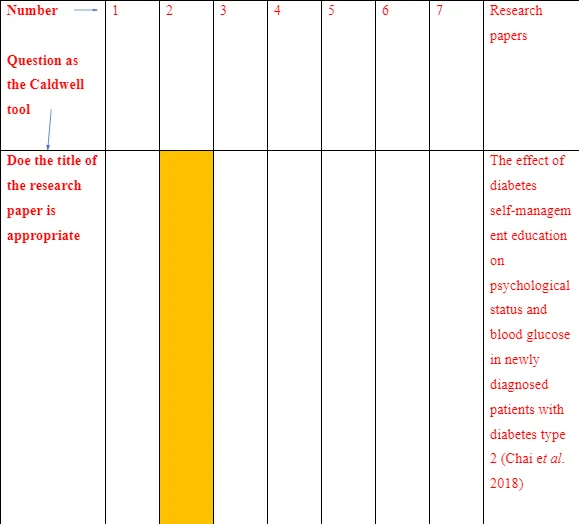
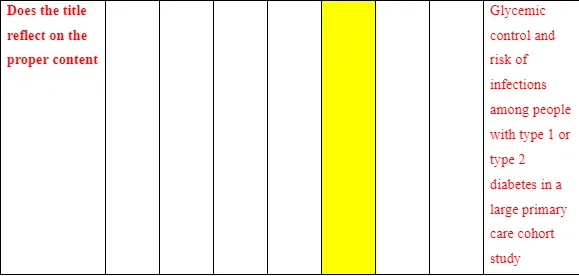
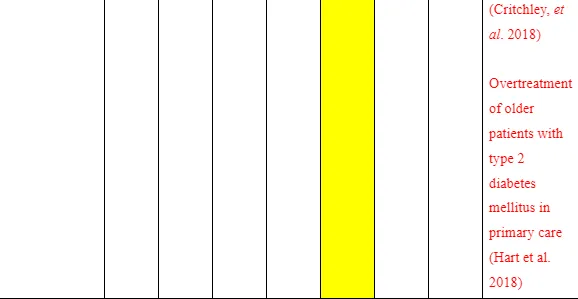
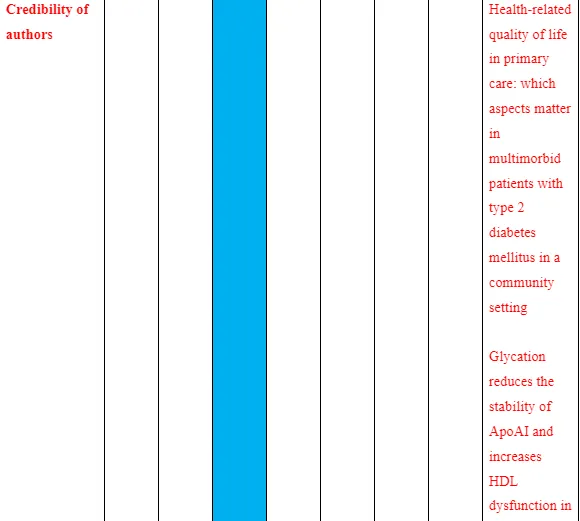
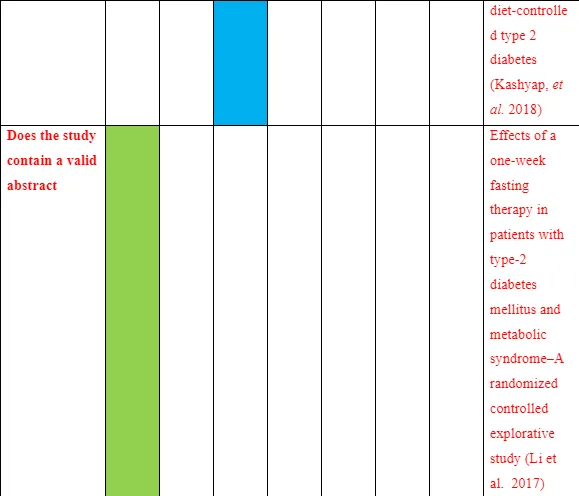



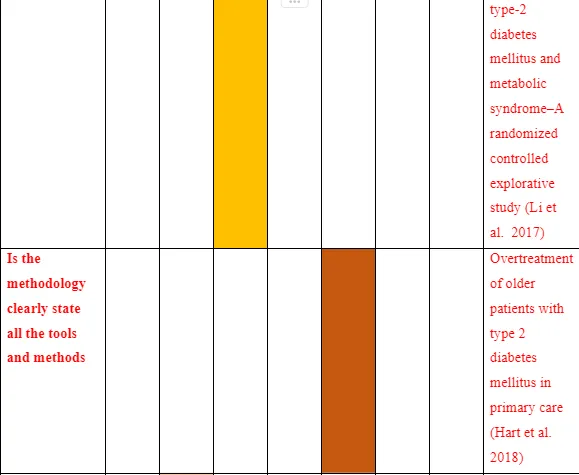


Summary
Introduction
Type 2 diabetes is the chronic condition in which there developed an insulin resistance inside the body which makes the body unable to utilise sufficient insulin for glucose metabolism. Although type 2 diabetes is the long-term condition that cannot be permanently cured, this condition can be prevented by following effective nutritional and dietary intervention. Effective dietary and nutritional intervention are crucial in the adult nursing in terms of prevention type 2 diabetes the assist nursing professionals to ensure that service users are provided with proper nutrition. This research paper will discuss the importance of effective intervention of nutrition and diet in adult nursing in relation to effectives management and prevention of the symptoms of type 2 diabetes. This study will review the selected primary research articles thereby comparing the information within these articles by using the relevant evidences.
Research questions:
What are the benefits of effective invention of nutrition and diet in adult nursing in relation to manage and prevent the symptoms of type 2 diabetes?
What barriers are associated with conducting effective intervention of dietary and nutritional in effective management and prevention of type 2 diabetes in the adult nursing?
What strategies need to be taken by adult nurses to improve the usefulness of the dietary and nutritional invention in improving physical health and wellbeing in people with type 2 diabetes
What are the recommendations that can be made to improve the benefits of nutritional and dietary intervention in manging type 2 diabetes the adult nursing’?
Methodology:
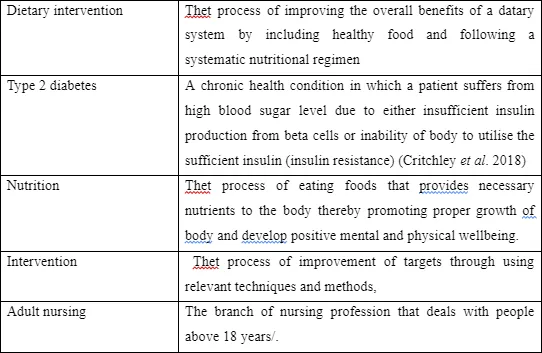
Result of search strategy:
Randomised control trial (RCT) has been used for selecting relevant articles. Primary articles have been selected for carrying out this research. Online database such as MEDLINE, CINAHL, Cochrane Library (Central Register of Controlled Trials) are used for collecting appropriate primary articles. British national Index has also been initially used for selection of relevant articles, but majority of the selected articles through using BNI were repeated, this is why the search through using BNI had been removed. Key terms or search terms such as adult nursing, dietary intervention, nutrition and intervention are used for selecting relevant articles. Boolean logic AND OR are also use to narrow the search. Finally, 8 primary articles are selected
Critical appraisal:
This study will use Moule (2018) critical appraisal framework in terms of critically appraise the selected articles.
Conclusion:
From the above-mentioned discussion, it can be concluded that, dietary and innutrition intervention are crucial in effective management and prevention of type 2 diabetes in adult nursing. Thorough conducting effective nutritional transition and dietary changes in case of people who suffer from this chronic health condition it is possible to improve the sugar level, and production and activities of insulin hormone inside the body thereby managing and preventing the symptoms of type 2 diabetes. Adult nurses must ensure that people with type 2 diabetes are provided with food that are able to meet their nutritional needs and maintain a healthy balance of glucose in their blood stream.
What Makes Us Unique
- 24/7 Customer Support
- 100% Customer Satisfaction
- No Privacy Violation
- Quick Services
- Subject Experts



